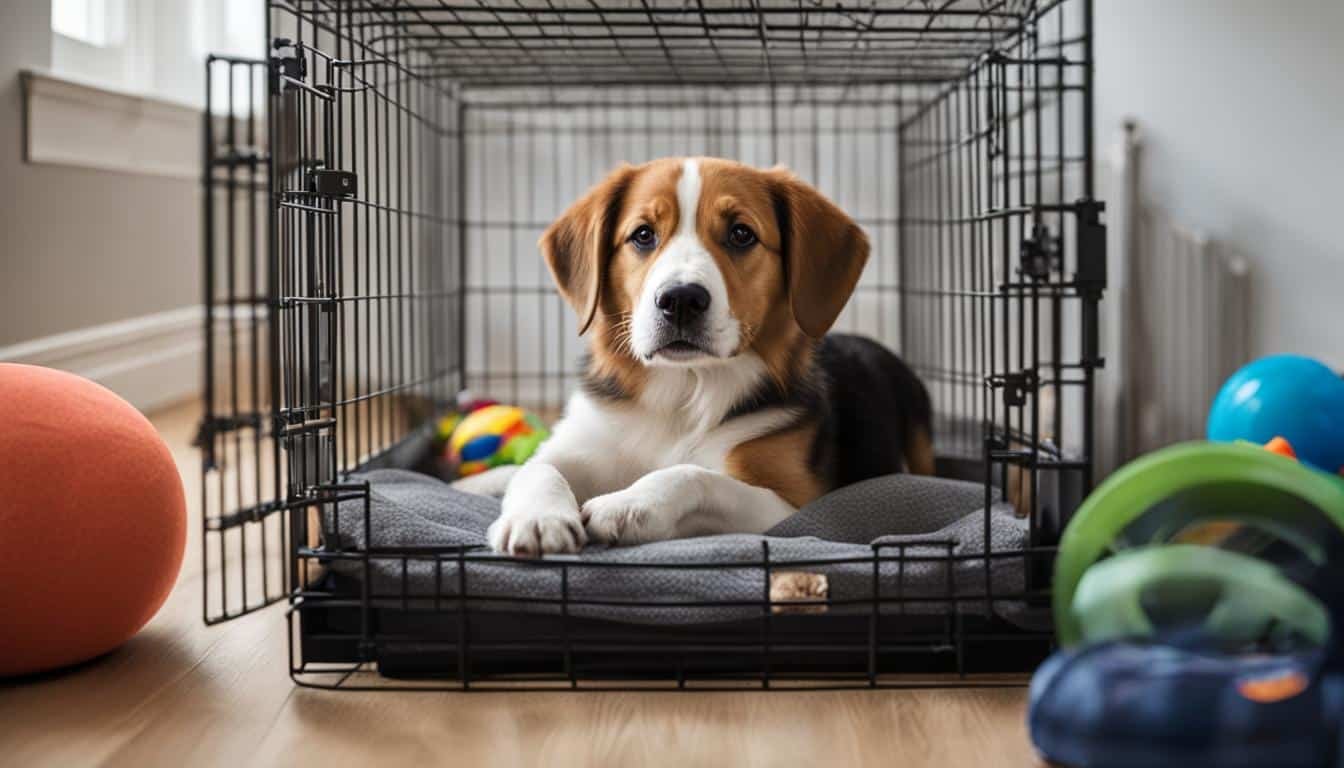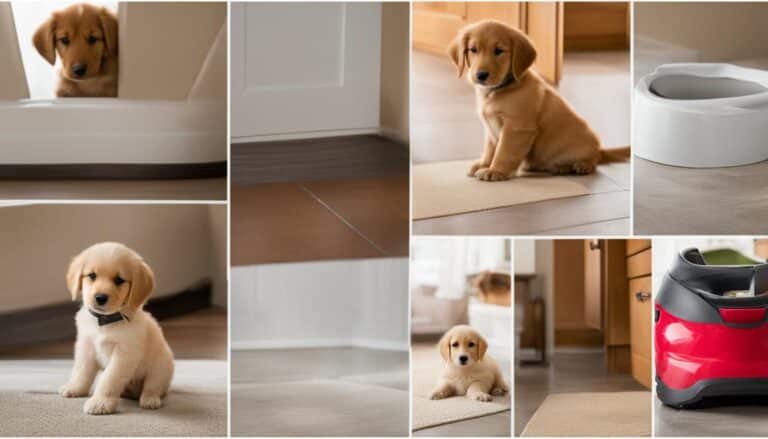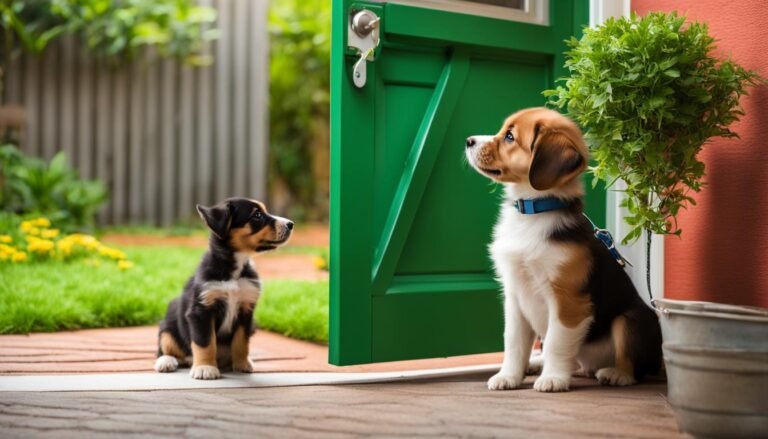What Is Dog Crate Training?
Imagine coming home after a long day, seeking solace in the familiar embrace of your own space. That feeling of security, of having a place where you can truly relax and be yourself, is something we all crave. And guess what? Dogs are no different.
Just like humans, dogs too yearn for a safe haven, a space that belongs solely to them. This is where dog crate training comes into play, providing dogs with a personal sanctuary that offers comfort and calmness. But what exactly is dog crate training?
Dog crate training is a proven method that helps dogs develop positive associations with their crates, teaching them to embrace it as their very own den. It involves an incremental and reward-based approach that gradually introduces dogs to their crates, helping them feel secure and at ease, even when you’re not around. The benefits of crate training go far beyond mere convenience; they foster emotional well-being for your four-legged companion.
Want to know more about the incredible advantages of crate training? Curious about how to get started? Look no further as we guide you through the journey of crate training, step by step.
Secure your spot in this exciting expedition towards crate training. Get ready to witness the transformative power it holds for both you and your furry friend.
Benefits of Crate Training
Crate training offers numerous benefits for both dogs and their owners. By providing a safe and secure space that mimics their natural den instincts, dogs feel comforted and protected in their crate. This sense of security can help with housetraining, as dogs learn to hold their bladder and bowels while in the crate.
One of the key advantages of crate training is its ability to prevent destructive behavior. When left unsupervised, some dogs may engage in chewing or other destructive habits. However, when placed in a crate, they are confined to a safe space where they are less likely to engage in these behaviors.
Additionally, crates are beneficial for keeping dogs safe when they are home alone. It prevents them from accessing potentially harmful objects or areas in the house. Crates are also useful during travel or visits to the veterinarian, offering a familiar and secure space in unfamiliar environments.
Overall, crate training provides a range of advantages, including safety, housetraining assistance, and prevention of destructive behavior. It promotes a sense of security for dogs and peace of mind for their owners.
How to Crate Train a Dog
When it comes to crate training your dog, following a step-by-step process is essential to ensure success. Whether you’re crate training a puppy or an adult dog, these crate training essentials and methods will help you establish a positive association with the crate and teach your furry friend to be comfortable and calm.
1. Introduce the Dog to the Crate
The first step in crate training is to introduce the dog to the crate gradually. Make the crate a positive and inviting space by placing treats, toys, and comfortable bedding inside. Keep the crate door open initially, allowing the dog to explore and enter the crate voluntarily.
2. Start with Short Crate Periods
Begin by keeping your dog in the crate for short periods of time, such as while you’re preparing meals or running quick errands. This helps them get used to the crate and understand that it’s a safe and temporary space. Gradually increase the duration as your dog becomes more comfortable.
3. Use Treats and Rewards
Encourage your dog to enter and stay in the crate by using treats and rewards. Associate positive experiences, such as receiving treats or praise, with being in the crate. This helps create a positive association and reinforces the desired behavior.
4. Establish a Regular Crate Training Schedule
A consistent schedule is crucial for successful crate training. Establish specific times for meals, bathroom breaks, and crate time. Following a routine helps dogs understand what’s expected of them and enhances the learning process.
5. Be Patient and Consistent
Patience and consistency are key throughout the crate training process. Understand that crate training takes time, and each dog learns at their own pace. Consistency in your approach and expectations will help solidify the training and ensure long-term success.
By following these crate training methods, you can create a positive and comfortable environment for your dog. Remember to be patient, use positive reinforcement, and establish a regular schedule. With time and consistency, your furry companion will quickly learn to love their crate!
Choosing the Right Crate
When it comes to crate training your dog, selecting the right crate is crucial for their comfort and safety. There are various types of crates available, including plastic, fabric, and collapsible metal pens. Consider the following factors when choosing the perfect crate for your furry friend:
Durability and Safety
Opt for a crate that is built to last and can withstand your dog’s activity level. Look for sturdy materials and secure latches to ensure that your dog remains safely contained. Additionally, check if the crate has any sharp edges or parts that could potentially harm your dog.
Size Matters
The crate should provide enough space for your dog to stand up, turn around, and lie down comfortably. Measure your dog’s height and length, and choose a crate that provides ample room for them to move without feeling cramped. If you have a puppy or a dog that is still growing, consider getting an adjustable crate that can accommodate their adult size.
Preferences and Needs
Take into account your dog’s preferences and needs when selecting a crate. Some dogs may prefer a cozy, den-like space, while others may appreciate more visibility and airflow. Consider whether your dog prefers an open or enclosed crate, as well as any specific features they may benefit from, such as a removable tray for easy cleaning or a carrying handle for travel.
Ultimately, the goal is to create a positive and comfortable space for your dog while they are in their crate. By choosing the right crate, you can enhance the effectiveness of the training process and make your dog feel secure and at ease. Remember, crate selection is an important part of crate training and sets the foundation for a successful training experience.

Crating Caution and Considerations
While crate training can be a beneficial tool for dog owners, it is crucial to use the crate correctly and consider your dog’s individual needs. The crate should never be used for punishment, as this can create negative associations and anxiety for your furry friend.

It is important to remember that dogs should not be left in the crate for extended periods of time without exercise or human interaction. They need regular breaks to stretch their legs, go to the bathroom, and receive social stimulation. The crate is not a replacement for daily exercise and playtime.
If you have a puppy under 6 months old, it’s crucial to understand that they have limited bladder control. They should not be crated for more than a few hours at a time. Puppies need frequent bathroom breaks to maintain their health and comfort.
As your dog becomes more comfortable with crate training and demonstrates good behavior, you can gradually transition them from the crate to being alone in the house when they are ready. This should be a gradual process, as sudden changes can cause anxiety or destructive behavior.
Troubleshooting and Common Challenges
Crate training is not without its challenges, and you may encounter some common problems along the way. One issue you may face is your dog whining or crying while in the crate. This is a natural response, especially in the early stages of training when your furry friend is still getting used to the crate. To address this behavior, it’s essential to resist the temptation to give in and let them out of the crate. Instead, try ignoring the whining and gradually increase the amount of time your dog spends in the crate. Eventually, they will learn that whining does not lead to immediate freedom and will become more comfortable.
Another challenge you might encounter is separation anxiety. While crate training can be helpful in managing separation anxiety to some extent, it may not completely solve the issue on its own. Separation anxiety can cause significant distress for your dog when you leave them alone, resulting in excessive whining, destructive behavior, or even self-harm. To address separation anxiety, counterconditioning and desensitization techniques can be effective. Remember, every dog is unique, and seeking the assistance of a professional animal-behavior specialist may be necessary in severe cases of separation anxiety.
It’s important to remember that crate training is a process that requires patience and consistency. While you may encounter some challenges along the way, with the right approach and techniques, you can overcome them and help your dog become comfortable and relaxed in their crate.






